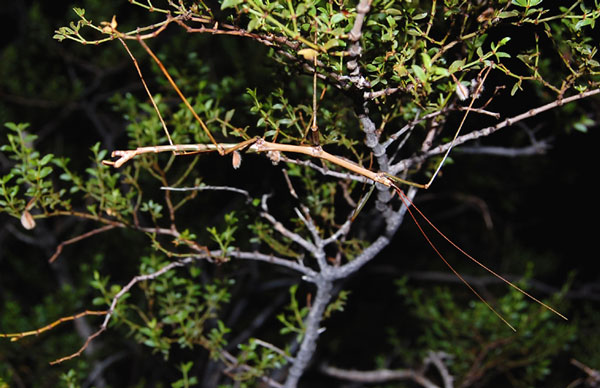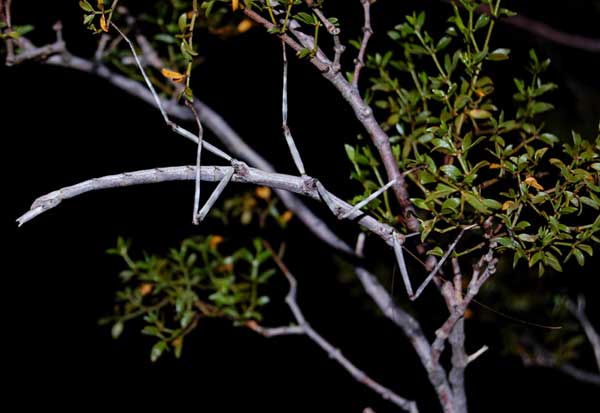Creosote Bush Walkingstick
Diapheromera covilleae

My vision was trained just a few decimeters away and still it took many minutes to pick out this master of crypsis. It was found in Vekol Valley, Sonoran Desert National Monument, Maricopa County, Arizona on 9 Aug. 2008. Creosote Bush (Larrea tridentata) has been a part of the arid Southwestern United States and Mexico for less than 12,000 years. Yet already an extensive fauna of well-adapted insects has evolved to utilize the now abundant resource.
Diapheromeridae -- a Walkingstick Family
By moving and feeding at night in the Sonoran Desert the Creosote Bush Walkingstick avoids excessive heat and drying winds. It also avoids visual predators such as birds and lizards. The specimen at left is a male (length about 9 cm not including the antennae) and was likely in search of a mate. It was on a small shrub and presumably would need to navigate across the ground to search nearby bushes. The female is shown below.
